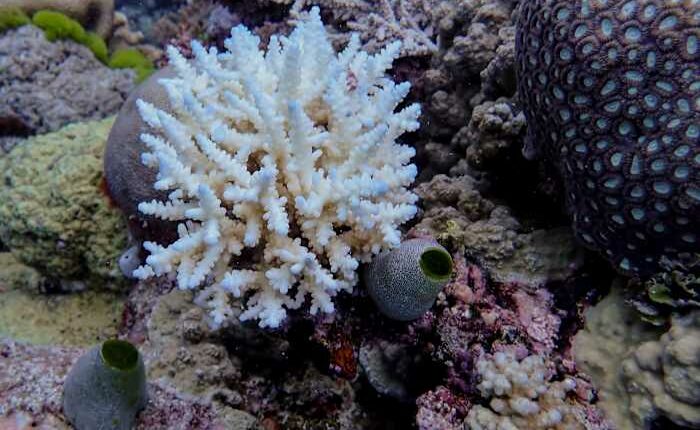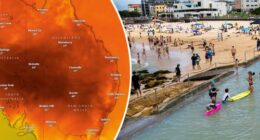Share this @internewscast.com

MELBOURNE – Australian officials report that the Great Barrier Reef has suffered its largest annual decrease in live coral in four decades of records.
However, since coral cover has been on the rise from 2017, the recent coral mortality — primarily due to last year’s climate change-linked bleaching — has kept the live coral area near its long-term average, according to the Australian Institute of Marine Science’s latest report.
The change underscores a new level of volatility on the UNESCO World Heritage Site, the report said.
Mike Emslie, head of the tropical marine research agency’s long-term monitoring program, stated that the 2024 live coral cover was the highest recorded in the 39 years of surveys.
He noted that the considerable initial coral cover mitigated the severe climate impact on the world’s largest reef system, which spans 344,000 square kilometers (133,000 square miles) off northeast Australia.
“These are significant impacts showing that the increasing frequency of coral bleaching is now causing major damage to the Great Barrier Reef,” Emslie commented on Thursday.
“While there’s still a lot of coral cover out there, these are record declines that we have seen in any one year of monitoring,” he added.
Emslie’s group categorizes the Great Barrier Reef, which stretches 1,500 kilometers (900 miles) along Queensland’s coastline, into three roughly equal regions: northern, central, and southern.
Living coral cover shrunk by almost a third in the south in a year, a quarter in the north and by 14% in the central region, the report said.
Because of record global heat in 2023 and 2024, the world is still going through its biggest — and fourth ever recorded — mass coral bleaching event on record, with heat stress hurting nearly 84% of the world’s coral reef area, including the Great Barrier Reef, according to the U.S. National Oceanic and Atmospheric Administration’s coral reef watch. So far at least 83 countries have been impacted.
This bleaching event started in January 2023 and was declared a global crisis in April 2024. It easily eclipsed the previous biggest global coral bleaching event, from 2014 to 2017, when 68.2% had bleaching from heat stress.
Large areas around Australia — but not the Great Barrier Reef — hit the maximum or near maximum of bleaching alert status during this latest event. Australia in March this year started aerial surveys of 281 reefs across the Torres Strait and the entire northern Great Barrier Reef and found widespread coral bleaching. Of the 281 reefs, 78 were more than 30% bleached.
Coral has a hard time thriving and at times even surviving in prolonged hot water. They can survive short bursts, but once certain thresholds of weeks and high temperatures are passed, the coral is bleached, which means it turns white because it expels the algae that live in the tissue and give them their colors. Bleached corals are not dead, but they are weaker and more vulnerable to disease.
Coral reefs often bounce back from these mass global bleaching events, but often they are not as strong as they were before.
Coral reefs are considered a “unique and threatened system” due to climate change and are especially vulnerable to global warming beyond 1.5 degrees Celsius (2.7 degrees Fahrenheit) since pre-industrial times, the United Nations Intergovernmental Panel on Climate Change proclaimed in 2018. The world has now warmed 1.3 degrees Celsius since pre-industrial times. That report said “tropical corals may be even more vulnerable to climate change than indicated in assessments made in 2014.”
The report said back-to-back big bleaching events at the Great Barrier Reef in the mid 2010s “suggest that the research community may have underestimated climate risks for coral reefs.”
“Warm water (tropical) coral reefs are projected to reach a very high risk of impact at 1.2°C, with most available evidence suggesting that coral-dominated ecosystems will be non-existent at this temperature or higher. At this point, coral abundance will be near zero at many locations,” the report said.
____
Associated Press Science Writer Seth Borenstein in Washington, D.C., contributed to this report.
Copyright 2025 The Associated Press. All rights reserved. This material may not be published, broadcast, rewritten or redistributed without permission.










